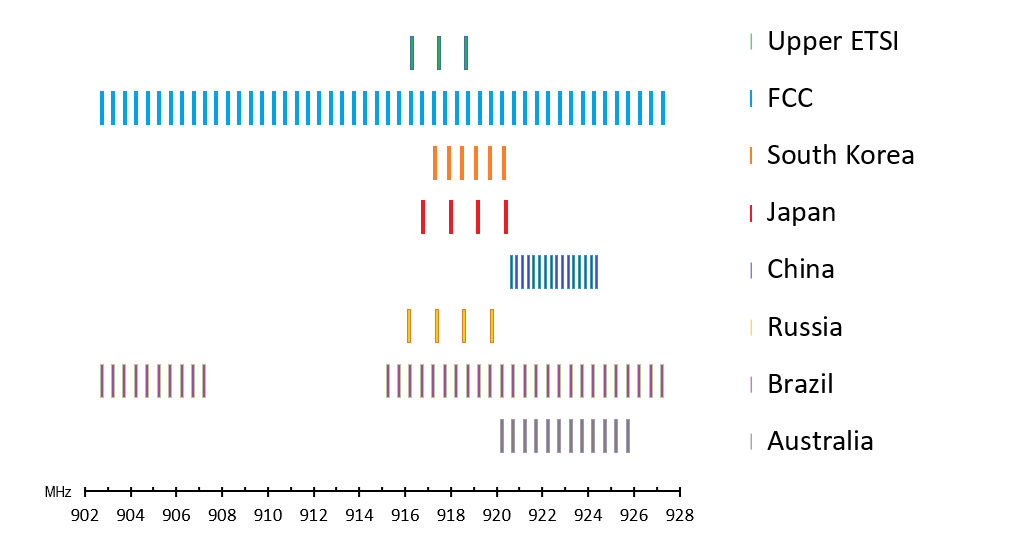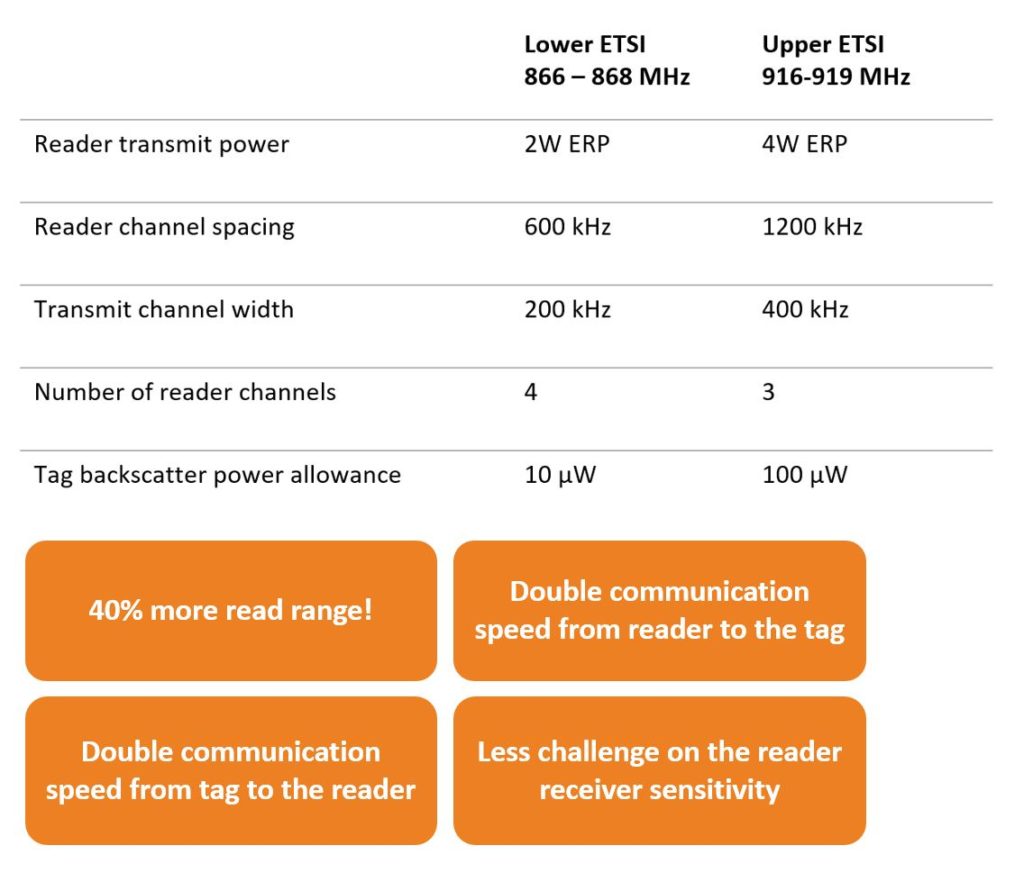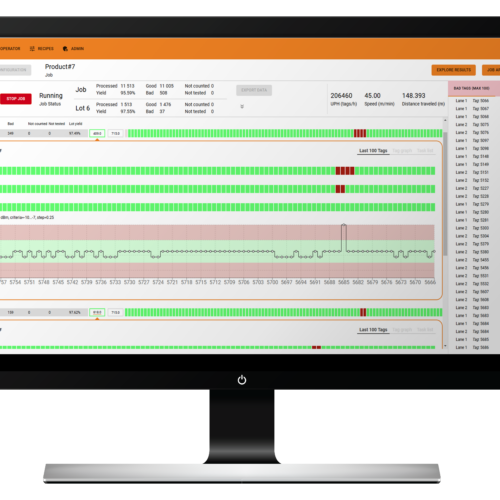How cool is NFC in that it simply works all over the globe: 13,56 MHz everywhere? How cool do you think it is, that RAIN RFID today enjoys the same: several reader channels between 902 and 928 MHz on all the continents!

Status up until 2018: two regulatory regions with no overlap
Traditionally, the end users and RAIN solution providers have accepted and adapted the fact, that in Europe RAIN deployments have been limited to operate at the 866-868 MHz range, also known as the ETSI range, where the four reader transmit channels are. The rest of the world utilized reader transmit channels somewhere between 902 and 928 MHz – the so-called FCC range.
The EU decided to harmonize the RAIN RFID band in 2018
After years of CEPT (short for European Conference of Postal and Telecommunications Administrations) technical studies and mounting pressure from the RAIN end users, the Commission Implementing Decision (EU) 2018/1538 specified three reader channels at 916,3 MHz, 917,5 MHz, and 918,7 MHz. The Commission also defined the implementation deadline as 1st February 2019 but acknowledged several exceptions for existing regional radio systems, such as military and railway deployments.

The picture above shows how well the European new RAIN RFID reader channels fit among the other global regulatory regions.
Status today: 902-928 MHz covered by a grand majority of countries!
As we study the RAIN RFID regulatory status document maintained by Mr. Craig Alan Repec of GS1 Global Office, out of the listed 81 countries with known status, 55 offer RAIN RFID reader channels between the band 902 – 928 MHz. Out of the CEPT 46 member counties, 25 have partial or full implementation for the upper European RAIN RFID channels, and that number is rising every year.
Performance benefits are significant
As one looks behind the numbers, you come to realize that specifically, the upper European band is wonderful news: more of everything!

“The upper European frequency band definitely offers dramatically more wiggle room for RAIN engineers to optimize system and component designs,” says Dr. Jesse Tuominen, the CTO RFID of Voyantic.
Business benefits
As most supply chains are global, it makes sense to keep the RAIN tagging specs at 860 – 930 MHz. This way tagging is responsive all around the globe, which adds simplicity to the deployments.
In certain applications, it might even make sense to narrow down the tagging specs to 902-928 MHz, as tagging and reader antennas can be further optimized for performance, footprint and, ultimately, cost. I believe this opportunity is especially interesting in applications, where there are severe space or area constraints for either the readers or the tagging.
What’s up with the slow adopters
Well, all I can say is that the RAIN RFID end users in Germany, the Netherlands, Croatia, Greece and a few other countries are in a totally unfair situation – they are outliers that remain limited to the lower European RAIN frequency bands for the time being.

Having said that, I foresee that nuisance to eventually pass. My advice is to prepare to upgrade deployments as those reader channels become available later on. Practically that means requiring the deployments to be compatible with and upgradeable to the 915-917 MHz in the RAIN project specifications.
Bottom line: use the upper European reader channels and be appreciative of them!
The awareness around the global harmonized RAIN frequency band has been slim. However, numerous end users are embracing it. “Most of the main RAIN users in France have declared they are going to use the upper bandwidth for their deployment to get all benefits from this new frequency possibility”, says Hervé d´Halluin, Leader RFID & Traceability of Decathlon. “This represents tens of thousand of locations spread all over France.”
What about the appreciation? Regulatory advocacy is an area where industry stakeholders need to pull their ranks together. With the help of industrial associations, such as the RAIN Alliance, AIM and GS1, we’ve done just that. If you’re in the RAIN RFID business for the long run, make sure your company supports these associations by becoming their member, because regulatory work never ends.
All blog posts


